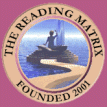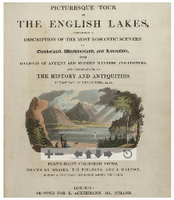Še v teh zares vročih dneh lahko zasledimo zares vroče teme. Upam, da vas naslov ne odvrača od branja tega prispevka. Rada bi namreč z vami delila zadnje, kar sem zasledila po prejetju novičk od ELTECS-a. Pa pričnimo pri začetku.
1. Novička o gradivu, ki je namenjeno poučevanju po sistemu CLIL (t.j. bilingvalnega učenja), ki ga je napisal Steve Darn z Univerze v Izmirju (Turčija), ki je vnet zagovornik CLIL-a, saj je na spletni strani Learning English (British Council) že napisal prispevek o
teoriji CLIL-a in
ogrodju, ki ga priporoča za pisanje gradiv po tem principu. Kot v uvodu h gradivu pravi,
the underlying principles being that language is used to learn as well as to communicate and that it is the subject matter which determines the language that students need to learn. However, this lesson also attempts to follow the 4Cs curriculum in that it includes Content, Communication, Cognition and Culture, and includes elements of all four language skills.
WOW! To je pa novo!! Ha, pa se tu ne konča. Gradivo, ki ga je spisal in ki naj bi vse to zajemalo in bilo svetel primer za CLIL najdete
tule (je v PDF obliki). Govori o geografiji Vankuvra. Je mar to tisto, kar naj bi geograf učil dijakom 3. ali 4. letnika srednje šole (gre namreč za dijake na nivoju jezikovnem znanju intermediate oz. višje)? Kaj ni to gradivo malce poenostavljeno z vidika geografa? Pa le zakaj bi se učili geografijo Vankuvra? Sama zasledim precej neskladja med cilji in njihovim doseganjem. Res me zanima vaše mnenje. Se motim?
2. Isto sporočilo ELTECS-a sporoča tudi novičko o Science Across the World, ki nas pravzaprav pripelje do spletne strani
Factworld. Ta pod rubriko Materials zelo radodarno širnemu svetu razloži stališče EU do bilngvalnega učenja. V uvodu razloži:
Content and Language Integrated Learning (CLIL), in which pupils learn a subject through the medium of a foreign language, has a major contribution to make to the Union’s language learning goals. It can provide effective opportunities for pupils to use their new language skills now, rather than learn them now for use later. It opens doors on languages for a broader range of learners, nurturing self-confidence in young learners and those who have not responded well to formal language instruction in general education. It provides exposure to the language without requiring extra time in the curriculum, which can be of particular interest in vocational settings. The introduction of CLIL approaches into an institution can be facilitated by the presence of trained teachers who are native speakers of the vehicular language.
Ker bralcu to verjetno ni dovolj jasna razlaga, ali ker morebiti učitelji potrebujemo več prepričevanja, pozneje ponovi razloge za bilingvalno učenje:
Bilingual teaching approaches, particularly aimed at Content and Language Integrated Learning (CLIL), are demonstrating many advantages, especially in increasing language diversity, improving motivation for language learning, and introducing a more international perspective. These approaches have emerged from the great diversity of methodologies across Europe. Traditionally, second languages were taught through grammar study and translation. In recent decades, this has often been replaced by communicative language teaching, which stresses oral skills, and competence in transactions and interactions, though some teachers still use grammar study to complement the development of oral work.
A key weakness of the communicative approach has been its relation to content. In it, the topic for language study often involves the learner as host or tourist, which in some cases can be very successful. In the early stages of language learning, in particular, this content may enhance learners’ motivation. However, there is evidence that in sustained teaching, such content can pall and result in demotivated learners, leading to disappointing linguistic progression. There is also evidence that by continuing to work and think through this limited content, learners can lose opportunities to develop thinking and learning skills that generate more advanced language competence.
Content and Language Integrated Learning addresses both these issues, and others, by providing a more content-rich environment for language learning and teaching. CLIL builds from the communicative approach and has a developed programmatic research base. It is necessary, therefore, that more teachers are trained to use it. There are various models of CLIL, which can be adapted for various age phases of education, and for contexts, which include regional languages, bilingual states, national languages and full international languages. At the same time as addressing language learning needs, CLIL has a major focus on the content based disciplines, such as history, geography, with which it is used. These issues lie outside the remit of this report, but in some senses, CLIL has the potential to enable teaching in all disciplines to contribute to language learning. It also has the potential to extend language diversity, especially in situations where specialist language teaching is unavailable.
Kaj vas ne pogreje to poenostavljanje? To povzdigovanje nekega pristopa tako, da se potiska nekaj drugega v blato in se ga razglasi za neuspešnega?
Hecno, pred nekaj meseci, ko sem izpolnjevala nek vprašalnik organizacije, ki naj bi združevala učitlje tujih jezikov v visokem šolstvu (se ga spomnite?), pa je tole združenje zelo jasno zapisalo, da je strokovno mnenje učiteljev tujih jezikov o CLIL-u negativno in svarijo pred njegovo širšo uporabo. Seveda tile strokovnjaki so CLIL videli precej bolj kompleksno in večplastno kot ga predstavljata Steve Darn ali Factworld.
In kaj predlagajo kot rešitev?
Provision to train teachers in CLIL approaches should be increased.
Ja, kar politiki se bodo odločali o tem. Kot slišim, marsikje pa že pripravljajo programe za učitelje, v končni fazi je izobraževanje le biznis, ki deluje na podlagi zakonitosti trga, mar ne? Ben, vsaj za nekatere.
Res verjamem, da bi bil že čas, da se nehamo slepiti s takimi in podobnimi floskulami tistih, za katerimi stojijo politiki ali pa kapital (založbe in izobraževalne ustanove), ki iščejo nove priložnosti za oplajanje denarja. Čas je, da nehamo gledati takšno početje brez besed in rečemo bobu bob. Se vam ne zdi?
 Za vse, ki vas zanima oblikovanje spletnih strani, ali pa tistih, ki spletno stran oblikujete in vzdržujete samo zaradi svojih študentov/dijakov/učencev, članek, ki vam bo razkril, kako lahko svojo spletno stran izboljšate. Članek je v angleščini in ga najdete tu.
Za vse, ki vas zanima oblikovanje spletnih strani, ali pa tistih, ki spletno stran oblikujete in vzdržujete samo zaradi svojih študentov/dijakov/učencev, članek, ki vam bo razkril, kako lahko svojo spletno stran izboljšate. Članek je v angleščini in ga najdete tu.








































